In Japan, people celebrate Jinjitsu no sekku (or Nanakusa no sekku) annually on January 7. On this day, Japanese have the custom of eating Nanakusa gayu (seven-herb rice porridge) hoping for good health for the coming year. So, when did this custom begin and what are the seven spring flowers (nanakusa) eaten in this dish? Let’s find out in today’s article!
What is Nanakusa gayu?
After all the holiday indulgences, Nanakusa gayu or known as Seven Herb Rice Porridge is traditionally eaten in Japan on New Year’s Day, Jinjitsu-no Sekku (人日の節句). It is a salty porridge made with ingredients such as the seven herbs of spring and rice cakes, eaten on January 7th to pray for good health for the year. The simple meal of rice porridge hits the spot after all the feasting and helps their overindulged stomach to heal and recover. The custom of eating rice porridge with seven herbs on Nanakusa Day is one of the five seasonal festivals, such as Joshi no Sekku (Peach Festival) and Tango no Sekku.
Seven Herbs of Spring
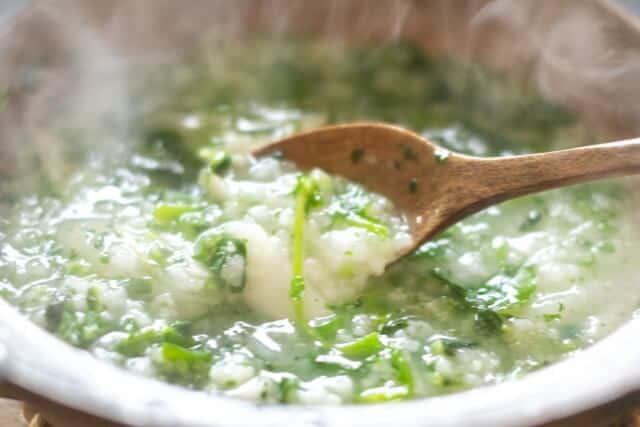
There is an old poem about the seven herbs of spring that no one knows about. “Seri, Nazuna, Gogyou, Hakobera, Hotokenoza, Suzuna, Suzushiro, these are the seven herbs.”
Seri

It is a wetland plant with a height of about 30 cm, also called Shironegusa, and has an underground stem. The name “Seri” comes from the fact that it grows in clumps as if competing.
Nazuna
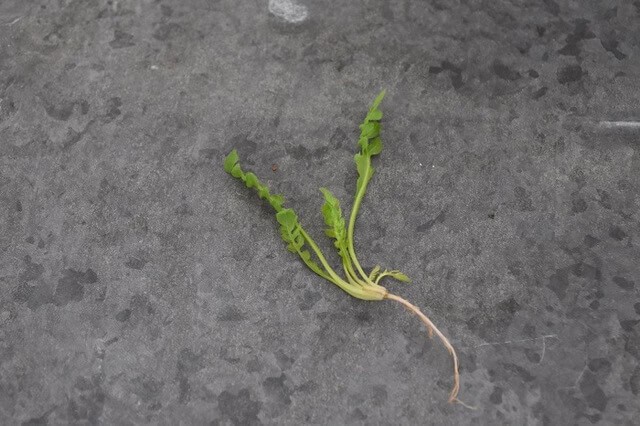
Shepherd’s purse, which is about 20 to 40 cm tall, is a biennial herb. There are various theories about the etymology. “Natsu no” because it dries up in summer. In addition, the cute name is “Nadena”.
Gogyou

This grass, which is also called ogyo or gogyo, is a boxy grass, and its leaves grow like a rosette in winter. It grows to 20-30 cm in spring and has round yellow flowers.
Hakobera

It is a small grass about 10 to 20 cm long, and popular as food since ancient times, and still used as food for chickens.
Hotokenoza

It grows in paddy fields and its young leaves are edible. Because the leaves spread like a rosette-like a dandelion, they called it “Buddha no seat” because it resembles the Buddha’s seat.
Suzuna

It is a turnip of vegetables that the enlarged root part is often eaten. Suzuna is also written as 菘 or Suzuna. Suzuna seems to be the etymology of flowers resembling bells.
Suzushiro

Like turnips, the enlarged roots are edible. The flowers are purple or white and resemble turnip flowers.
Etymology
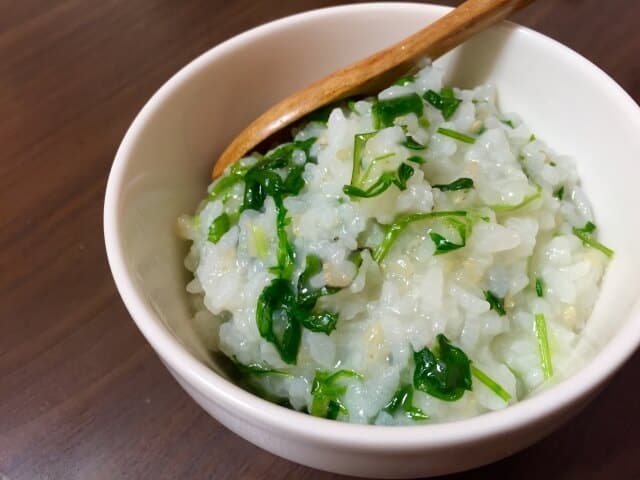
It is a type of okayu or rice porridge that consists of seven (七 nana) herbs (草 kusa). Japanese sometimes call it haru no nanakusa (春の七草), which means spring seven herbs, because young herbs that are available during this time of year are more tender and fragrant.
Nanakusa gayu History

Nanakusa porridge has its roots in a Chinese custom. During the Tang dynasty in China, people served a soup with seven kinds of vegetables, known as shichishu Saiko (or shichishu no Saiko), at the People’s Day Festival on January 7th. They ate this soup and wished for good health, a custom that old records document and various places practiced.
In Japan, a custom called “Wakana picking” has existed since the Nara period, about 1300 years ago. People picked young green shoots that emerged from the snow to absorb the vitality of the plant. The Manyoshu and Hyakunin Isshu include songs about the seven herbs (picking young herbs).
Nanakusa gayu Recipe

Nanakusa gayu Ingredients
| Ingredients of Nanakusa gayu for 4 people | Measurements |
|---|---|
| Rice | 150g |
| Seven Herbs | 10g |
| Salt | 3g |
| White sesame | 2g |
| Black sesame | 2g |
How to make Nanakusa gayu
Drain the rice, put it in an earthenware pot with 900ml of water, and when it boils, reduce the heat to low and cook for 30-40 minutes. If it seems to boil over halfway through, slide the lid to let the steam escape.
Finely chop the seven herbs. 5 minutes before the rice porridge is cooked, sprinkle a little salt and mix it all over the nanakusa.
Place in a bowl and sprinkle with white and black sesame seeds.
Why do you eat nanakusa porridge?
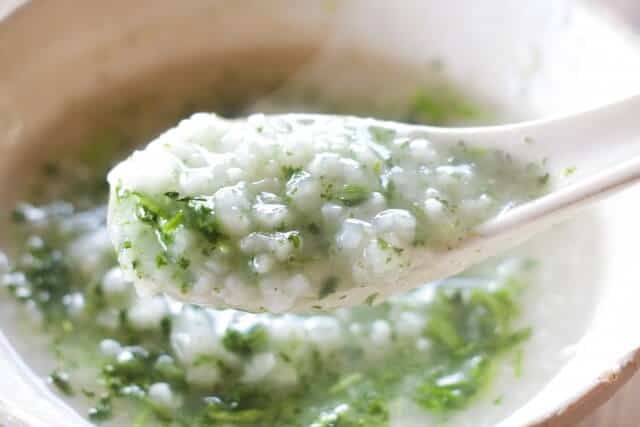
On January 7th of the New Year, the Japanese observe a tradition known as nanakusa no sekku (七草の節句), or the Festival of the Seven Herbs, by eating a healthy rice porridge called Nanakusa Gayu (七草粥). This time-honoured custom is believed to bring good health and ward off evil spirits for the rest of the year.
Song of Nanakusa Gayu

On the night of January 6th, the seven spring herbs harvested by picking young greens are chopped with a kitchen knife to prepare the rice porridge. When carving the seven herbs, locals sing a folk song called “Nazuna Nanakusa”. Nanakusa-bayashi differs from region to region, but the lyrics include common words such as “Karachi”, “Bird”, and “Wandering”. “Karachi no Tori” refers to Chinese birds, and Nanakusa Hayashi has the meaning of “Destroy Chinese birds before they come to Japan and destroy crops or bring diseases.” rice field.
Why do Japanese eat Nanakusa Gayu?

The seven herbs are said to ward off evil because they sprout quickly in early spring. In the old days, they also decided the number of times they chopped the herbs on the cutting board. It’s nice to eat it like a charm, but actually, this nanakusa porridge is a custom that goes well with cooking. Nanakusa is a kind of Japanese herb, which locals eat in porridge that does not put a burden on the stomach and intestines. In addition, the light porridge has a very fresh taste after a series of slightly strong New Year dishes.
Where to buy Nanakusa Gayu
Porridge Restaurant Shinjuku Keio Mall (粥餐庁 新宿京王モール店)

A specialty store of slow food “Kyu” with the concept of “Chinese cuisine of Japan’s four seasons”. Based on the idea that medical food is the same source, they prepare seasonal porridge every week so that you can stay healthy both physically and mentally by eating seasonal foods. Every year, they offer a limited amount of “Hokkuri Daikon and Nanakusa Porridge” (¥790) during the seven herbs season. It looks like a simple white porridge, but it is a dish with softly boiled daikon radish and seven herbs in the bottom of the rice porridge.
Soup Stock Tokyo (スープ ストック トーキョー)

At Soup Stock Tokyo on January 7, Nanakusa Gayu, one of the traditional Japanese foods, will appear at all stores on January 7 only. What they offered is “Setouchi red sea bream porridge with seven herbs” (¥470, S size only). Just as the soup of the restaurant is a dish that brings out the original taste of the ingredients, the interior of the restaurant is a space that makes use of materials such as concrete, terrazzo, tiles, and wood.
Atago Shrine “Nanakusa Fire Festival” (愛宕神社)

Since the Edo era, 808 towns have honoured the business as the deity of fire prevention. Every year on January 7th, they place a holy tree in front of the altar, toss up New Year’s decorations and old banknotes, and perform “Saotome no Shinji,” a performance of the nanakusa tataki’s ancient words. At the end of the ritual, they serve worshipers rice porridge with seven herbs, and the precincts become packed. The event begins at about 11:00, and they reduce the amount of Nanakusa porridge after the festival, around 12:00.
Final Thoughts

When people in Japan are feeling under the weather, they frequently eat a basic bowl of okayu since it is light, soothing, and easy on the stomach. It is an appropriate meal for healing any heavy sentiments or illnesses. It makes sense to eat nanakusa gayu as we close up the New Year festivities. Because there is little green during this time of year, the young herbs added to the porridge add colour to the table and symbolise renewal for the next year.
There are some other traditional New Year’s cuisine from Japan that will surely make you want to try them, such as Osechi, Chorogi, Kuromame and Tadukuri.






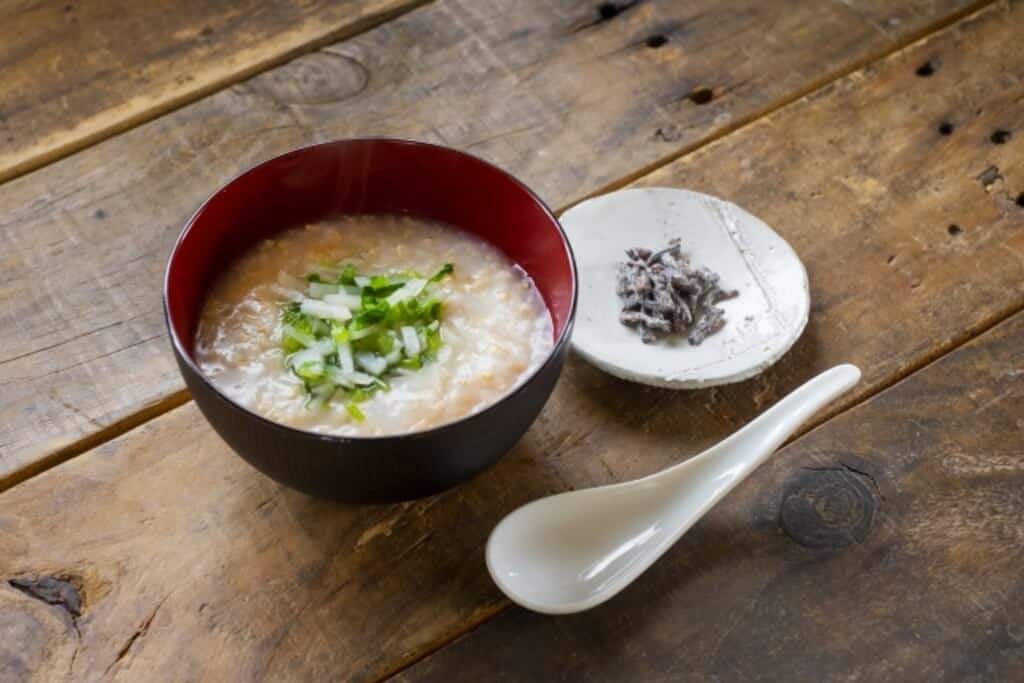
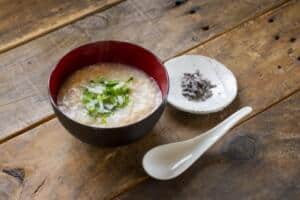
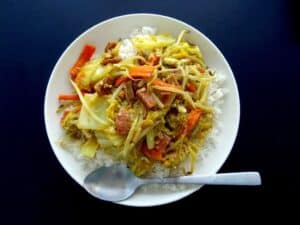







Comments